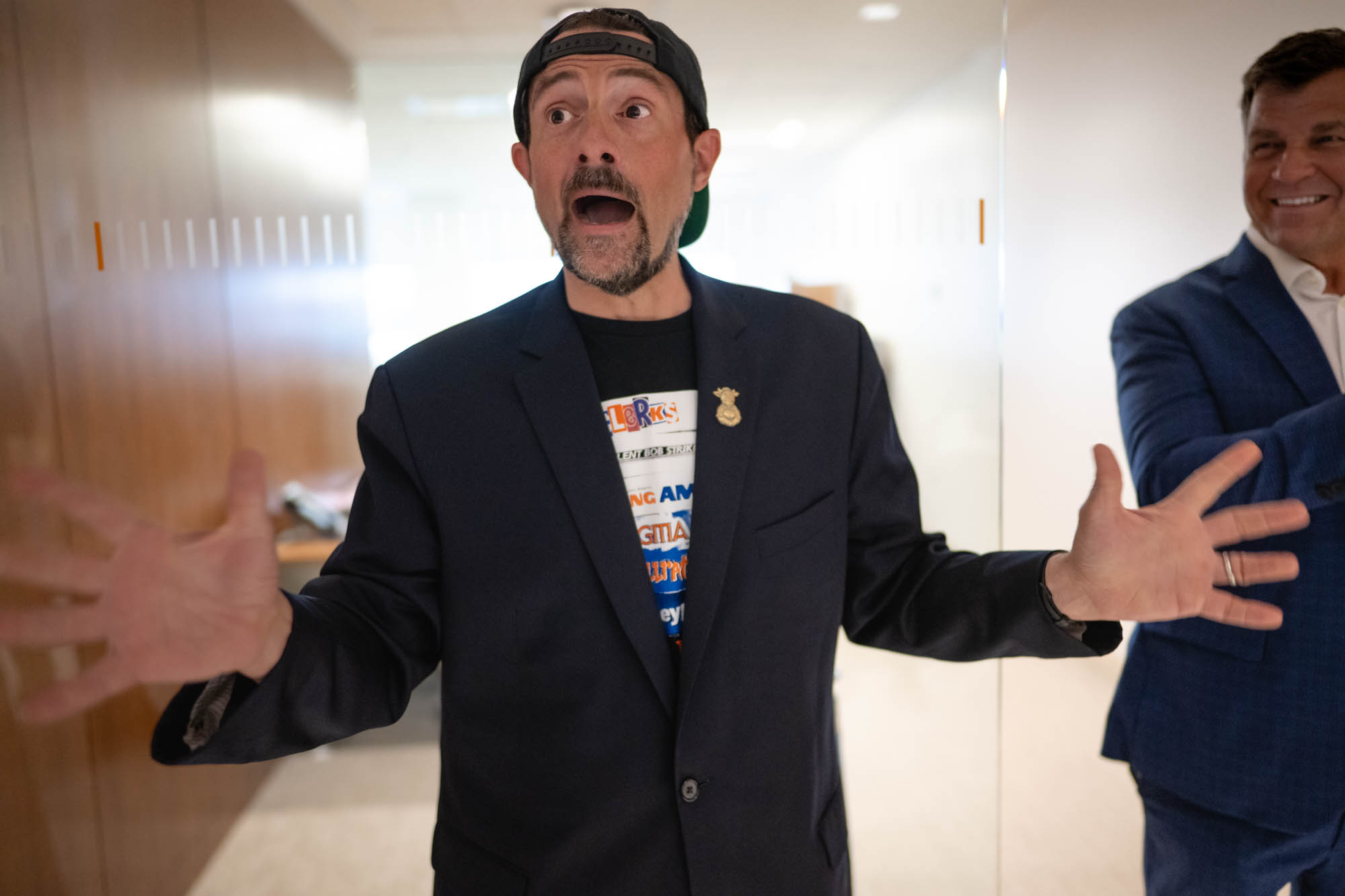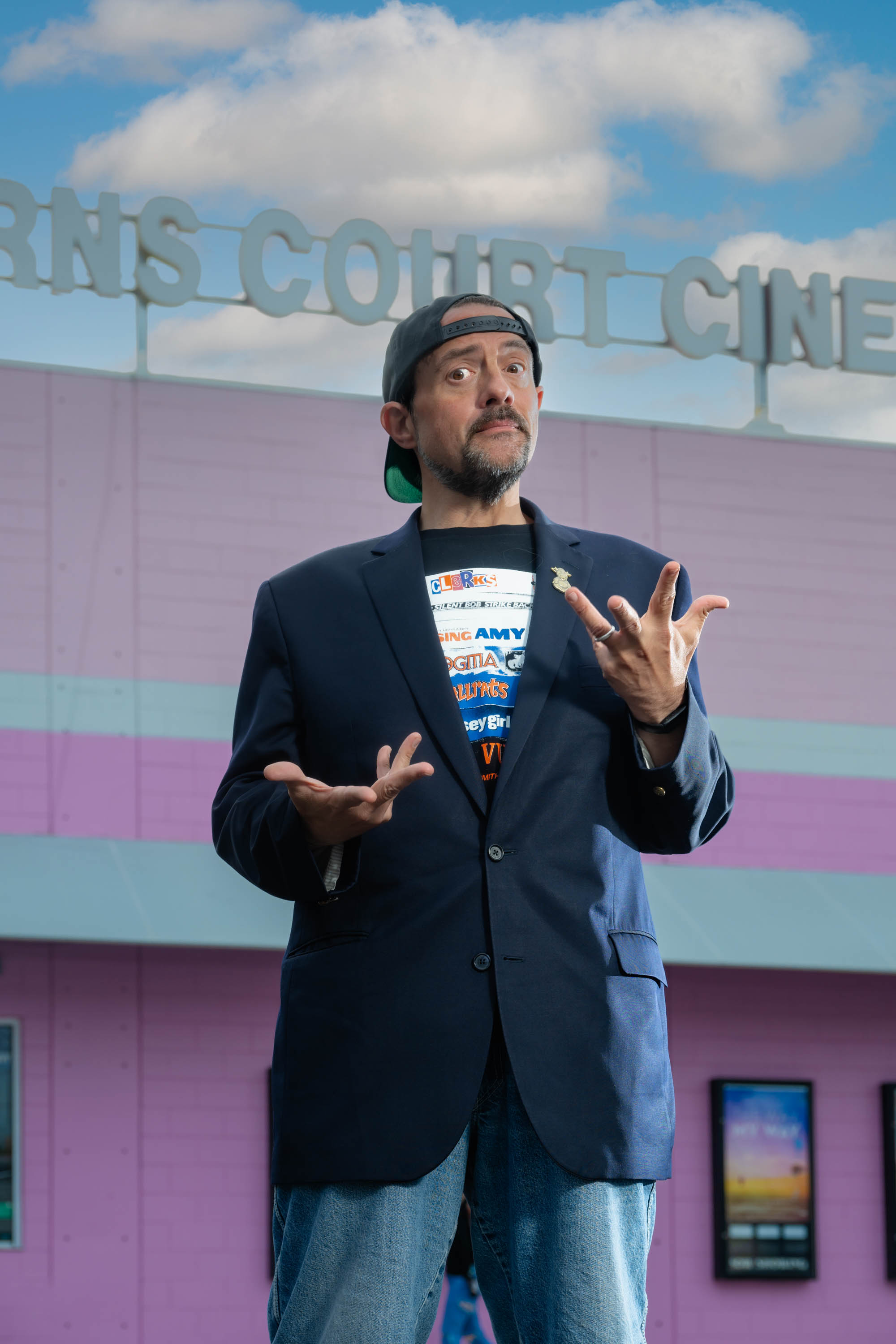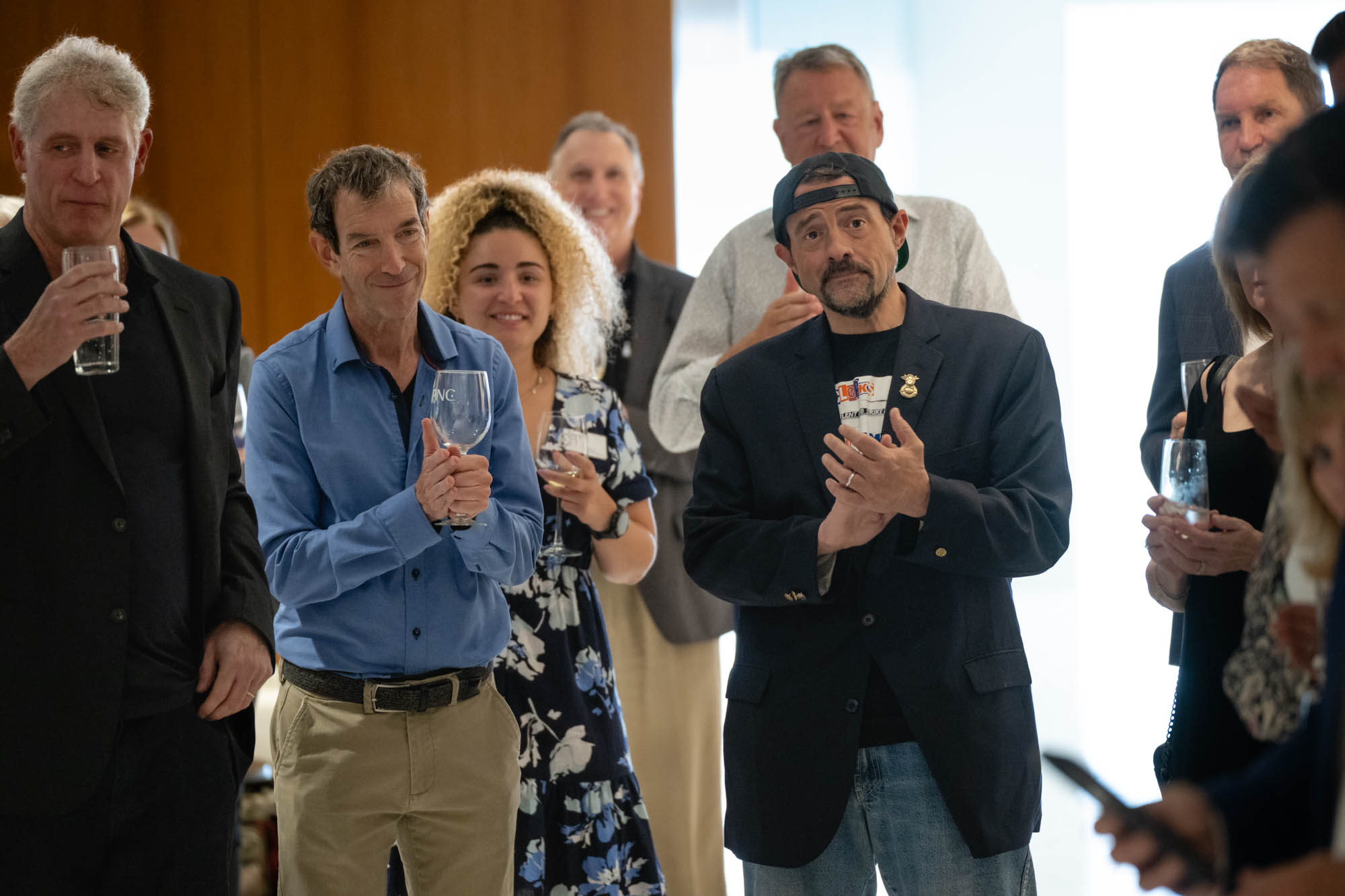Make pretend. It’s a phrase that Kevin Smith uses repeatedly when speaking about filmmaking. At first, the two words seem like an oversimplification to the intricate, multi-faceted process of making a film. So much, after all, goes even to shooting a short film, from the scouting of a location to the hiring of the actors to editing, sound mixing and more. The phrase, however, is less a statement than an admission from one of the preeminent voices of independent filmmaking—that at the heart of what he does, he is still just “making pretend”.

Since his directorial debut of Clerks in 1994, Smith has become the poster child for DIY-style filmmaking. Shot on a shoestring budget at the New Jersey convenience store where Smith worked, Clerks became living proof that Hollywood could be cracked, that talent, drive and want-to could in fact be enough for a story to have success. After Clerks, Smith forged a career straddling the two worlds of Hollywood and independent cinema—he’s worked with A-list stars like Ben Affleck and Matt Damon and directed major studio films while continuing to create independent projects and author comic books.

In 2025, Smith’s creative spirit touched down in Sarasota for the first ever public screening of KillRoy Was Here at Burns Court Cinema. A comedy horror anthology film shot in and around Sarasota in 2017 and 2018, KillRoy Was Here marries two of Smith’s passions: an intense drive to create and the ability to empower future generations of filmmakers. The film, which was made with the full collaboration of Ringling College of Art and Design students, traces its roots to the graffiti phenomenon “Kilroy was here”, a meme depicting a looming character with a large nose that became popular during World War II. In KillRoy Was Here, four intertwining stories illustrate the legend of Killroy, a local boogeyman figure, and the dire consequences of saying his name three times.
“Sarasota just gave us so many different looks,” says Smith, who directed and co-wrote the film. “We set the project in Florida, so we were able to take advantage of all of the different looks of the area, whether it be Spanish moss hanging off a tree or different water beds, because Killroy is something of a swamp creature.”
The film, which is just over an hour long, is stitched together from four different short films with the intention of providing real-world experience to student filmmakers. The production, however, wasn’t just experiential—Smith valued and used the input of the student crewmembers, which helped shape the stories that appear on screen. In one of the stories of KillRoy, the monster feeds a poisonous flower into a character’s mouth. Smith, at a loss for how to get a fake, chewable flower into the actor’s mouth without ruining their makeup, looked to the students for advice. “I kept telling them, ‘don’t be afraid to make a suggestion,’”says Smith. “When we needed to create that flower, one of the students made it edible by sculpting it out of marzipan. That’s above and beyond the call of duty. Watching those kids reach for and achieve new artistic heights while we were making this dopey little horror movie was pretty inspiring.”
There was an energy and attitude from the student filmmakers that Smith found infectious. They too had been bitten by the magic of the silver screen and had experienced the same calling to create at any cost that Smith had at a young age. It was an eagerness that Smith had seen all too often diminish within the grind of Hollywood. “They’re hungry for it. It being something that I’ve done so many times, so being around that enthusiasm pumps you up and reminds you of why you started this journey in the first place,” says Smith. “If you’re going to make pretend, which is essentially what we do, you want people that are game for that. It’s not a job for any of these kids. It’s a passion. It makes for a far more habitable set and better work is going to come from it.”Protecting that creative spark can be difficult, Smith admits, especially in the entertainment industry. “It’s tough when you’re trying to commodify your passion. It’s like presuming upon the most precious relationship in your life,” says Smith. “If it’s my words or my feelings or my perspective, then I’ve got to find a way to make a living off of it and still have it mean something to me and not cheapen it to the point where it’s just the way that I get paid.”
Nurturing that spark, however, doesn’t have to be as difficult. Just as the legend of Killroy has lived on throughout time, so too will the project continue to provide real-world experience to burgeoning filmmakers in the Sarasota-area. The next chapter of KillRoy Was Here will be created through the Studio Lab KillRoy Bootcamp, an intensive filmmaking workshop that will run twice a year in Sarasota, where students will have the opportunity to be involved in every step of the creative process, from writing the scripts to shooting and working in post production. SRQ









